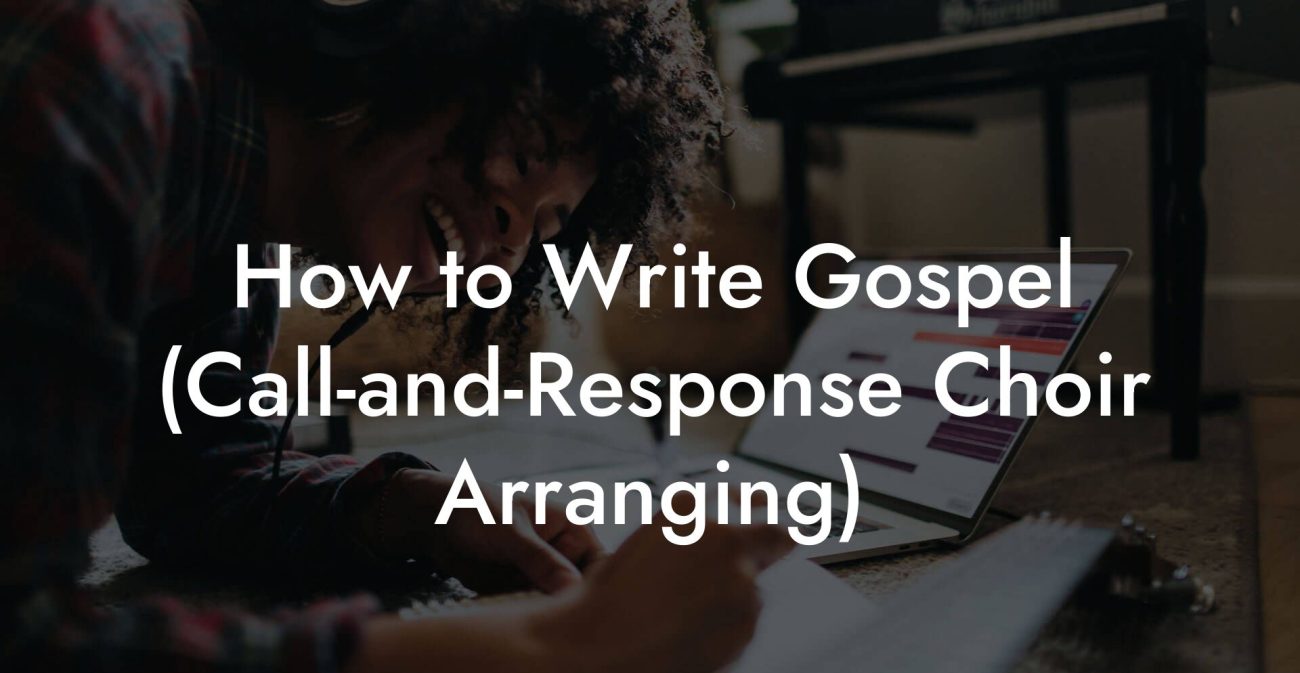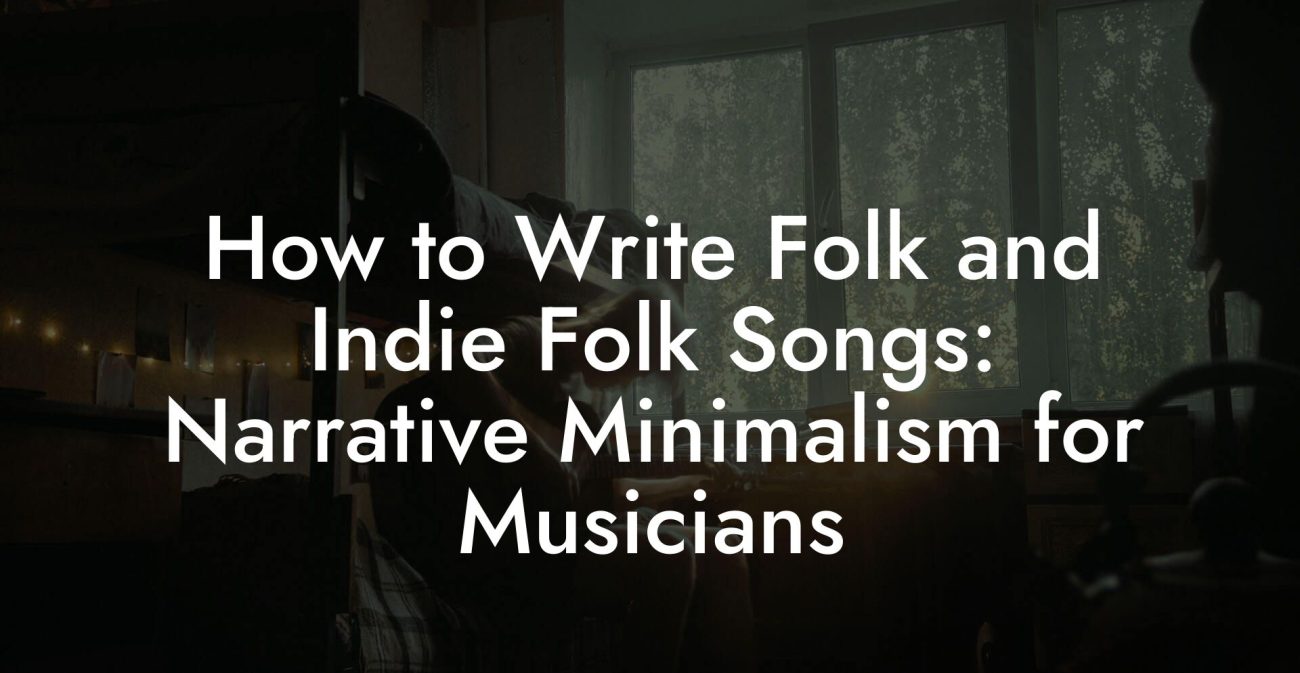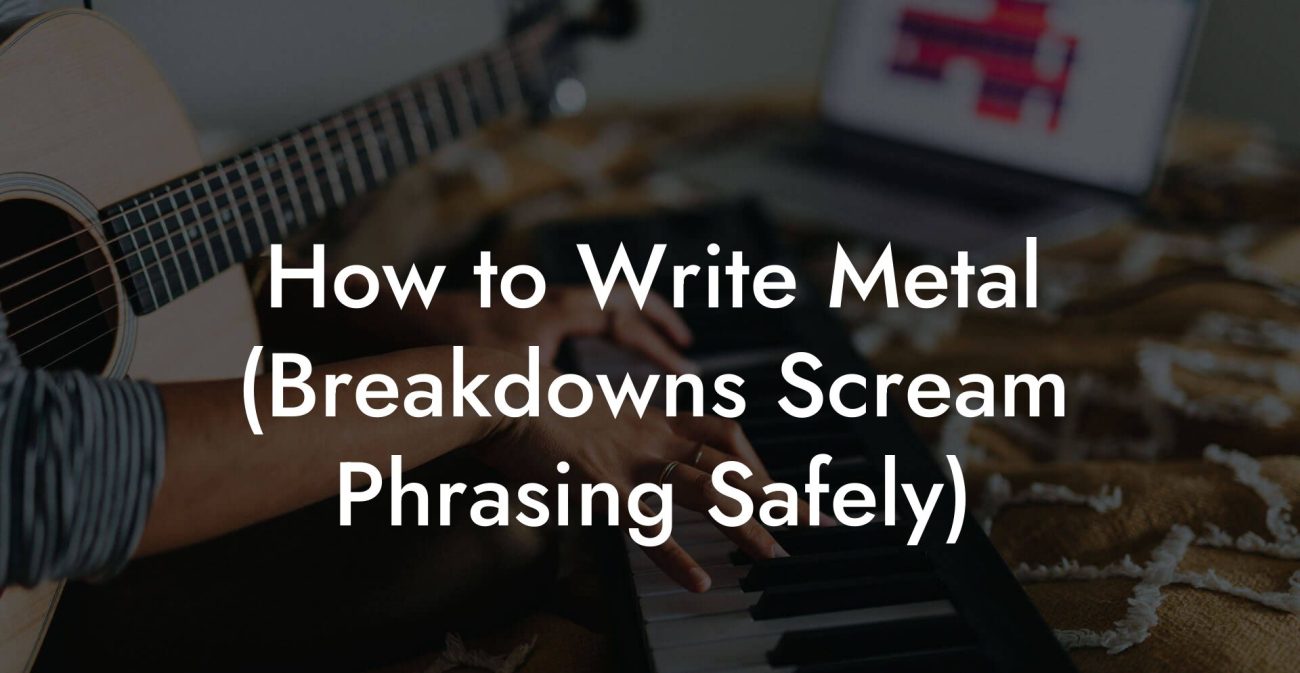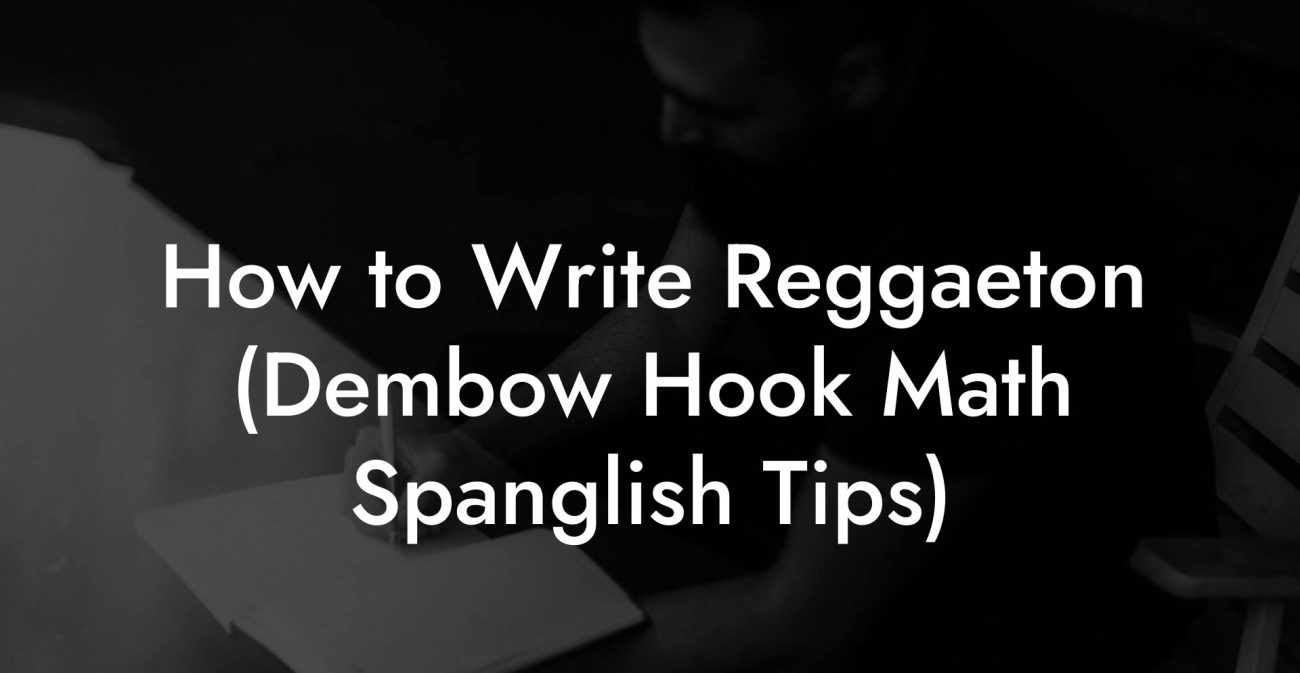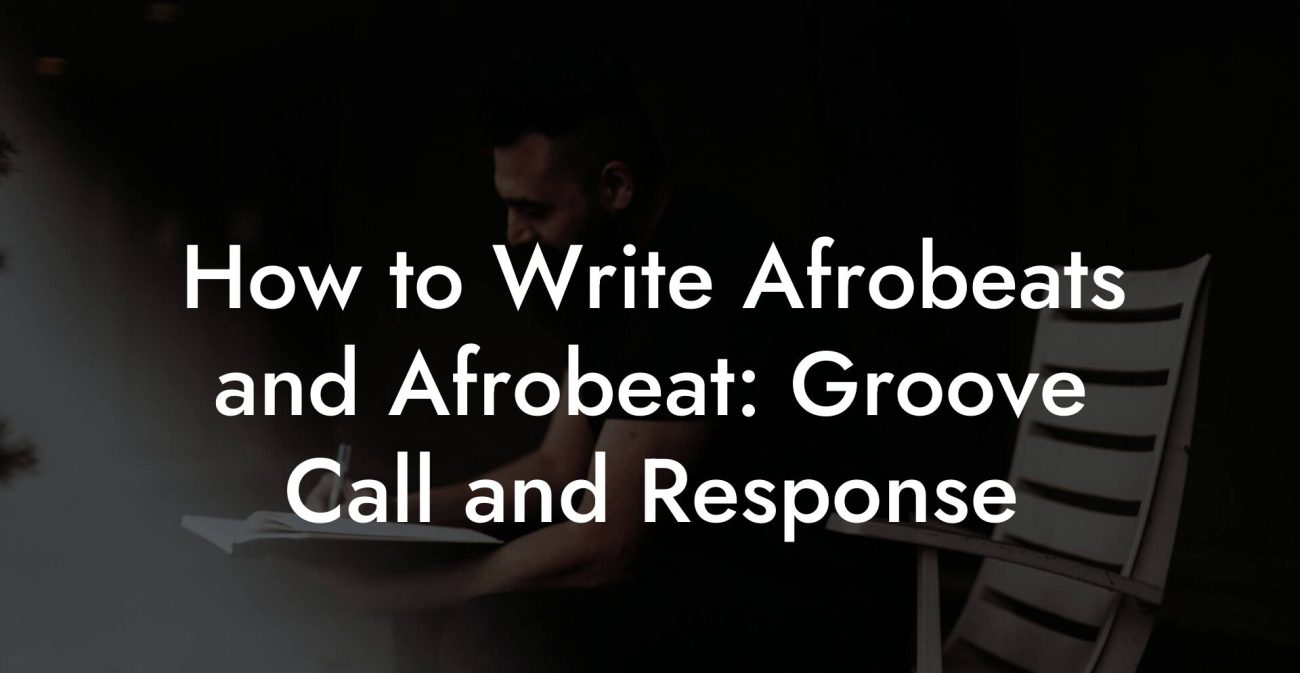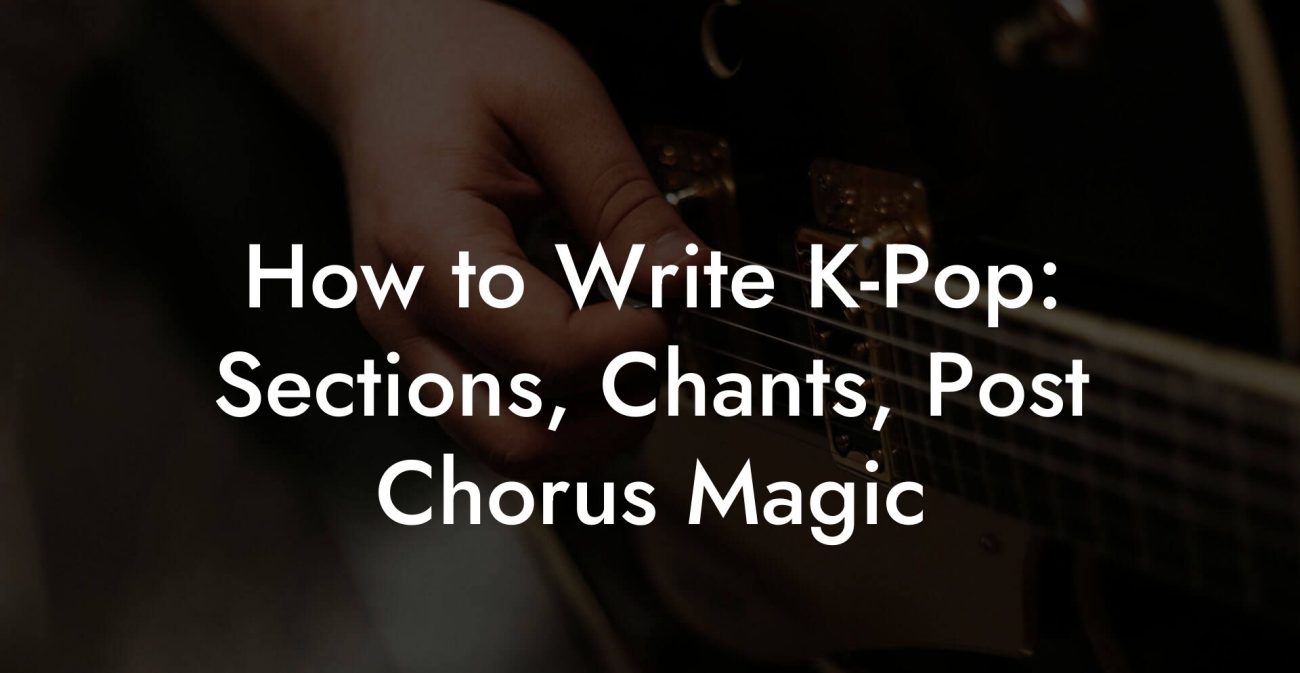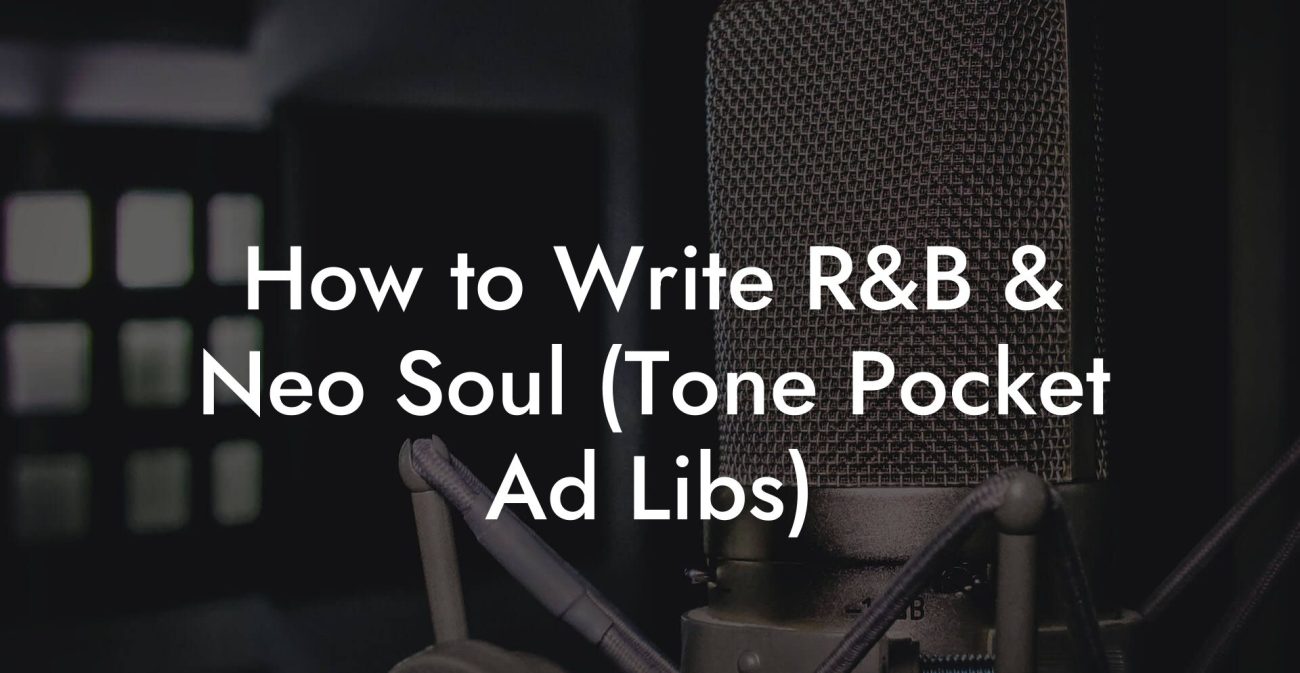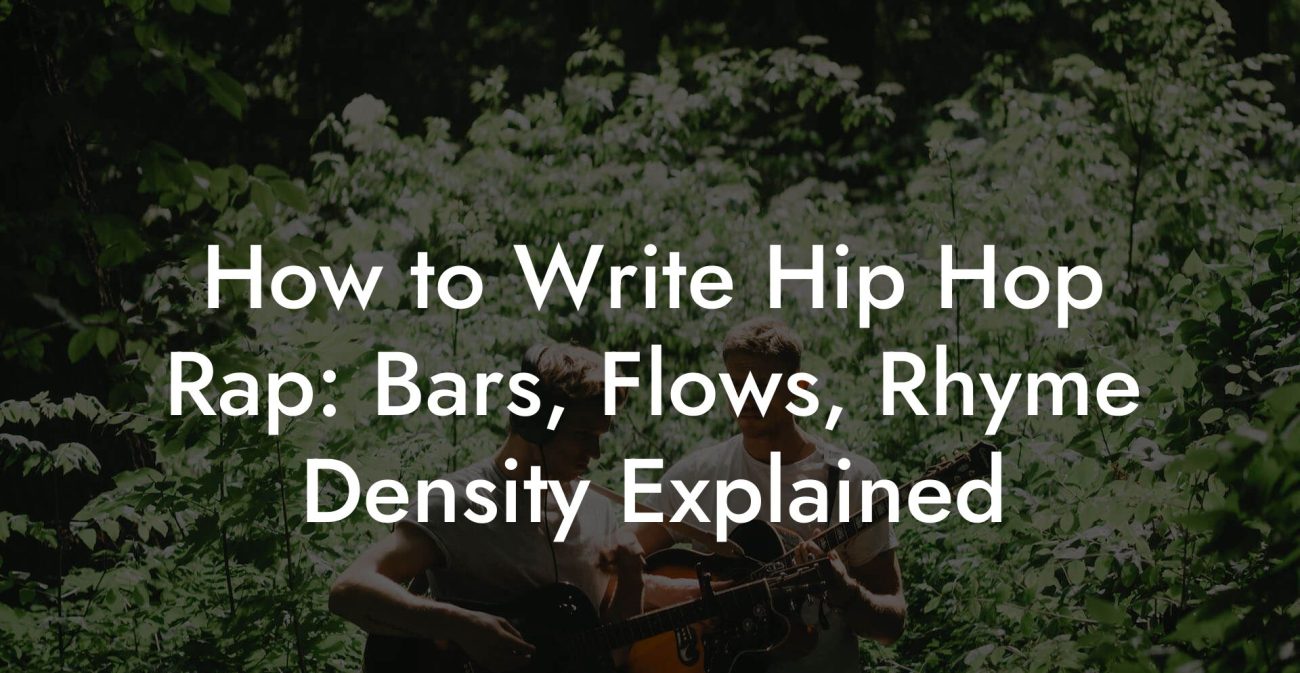Songwriting Advice
How to Write Rock and Classic Rock Songs: Riffs as Motifs
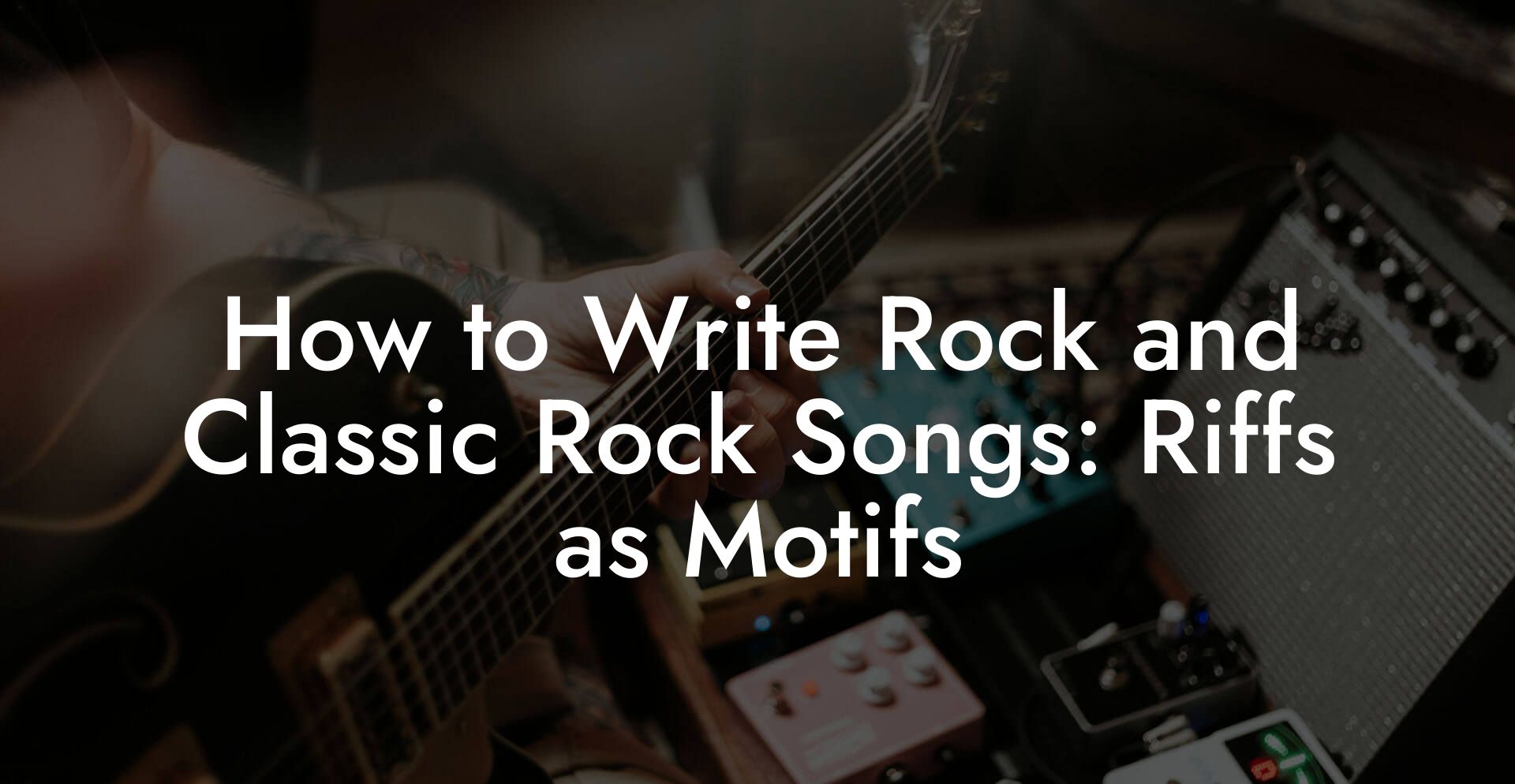
Want riffs that punch like a fist to the chest and stay in listeners heads forever? Good. You belong here. This guide turns riffs from teenage garage noodling into ruthless motifs that run the whole song. We will cover how riffs function as themes, how to write them fast, how to build songs around them, how to make them sing with vocals, and how to get the tone to match the attitude. Expect practical exercises, real life scenarios, and no fluff that reads like a record label press release.
Quick Links to Useful Sections
- Why riffs matter more than you think
- What makes a great rock riff
- Common scales and sounds for rock riffs
- Pentatonic minor
- Blues scale
- Mixolydian mode
- Natural minor and Dorian
- Rhythm first riff writing
- Riff as motif: building the song from one idea
- 1. The intro riff
- 2. The verse riff variant
- 3. The pre chorus build
- 4. The chorus full motif
- 5. The bridge transformation
- Harmonic options under riffs
- Melodic contour and motifs
- Lyric and riff interaction
- Riff leading
- Vocal leading
- Wrestle for space
- Tone and gear tips that do not require expensive pickups
- Arrangement maps you can steal
- Map A: Anthem
- Map B: Bluesy rocker
- Map C: Power stomp
- Writing riffs fast: exercises that work
- Ten minute riff sprint
- Call and response drill
- Texture swap
- Lead parts and solos that respect the motif
- Lyrics in a riff based song
- Production and mixing for riff clarity
- Common riff mistakes and how to fix them
- Advanced motif techniques
- Retrograde and inversion
- Metric modulation
- Polytonal layering
- How to finish a riff based song quickly
- Examples and before after rewrites
- Action plan you can use tonight
- Rock riff songwriting FAQ
Everything here is written for millennial and Gen Z artists who want to write memorable rock songs without pretending to be a music professor. We explain any terms or acronyms you need. We keep it messy, honest, and useful. By the end you will have a riff based blueprint that works for classic rock styles and modern rock power.
Why riffs matter more than you think
A riff is not just a guitar lick. A riff is a motif. In songwriting motif means a short musical idea that appears repeatedly and shapes the listener experience. Think of it as a character in a movie. The riff announces a mood. It signals the chorus. It can invade the chorus. It can be the hook that makes people hum your song in traffic or at work. Classic rock is built on riffs that act like theatrical motifs. They show up, they transform, and they keep returning until the audience knows the story.
Real life scenario
- Driving to a friend who ghosted you. Your friend says the chorus makes them think of that exact night. The riff was the memory trigger. That is motif power.
What makes a great rock riff
Not every catchy guitar line is a riff. A great rock riff has these qualities.
- Identity. It sounds like your band. It has a tonal fingerprint.
- Repeatability. It is short enough to repeat but flexible enough to change shape later.
- Rhythmic drive. The rhythm is as important as the notes. Riffs often live in syncopation, accents, or groove patterns.
- Intervallic shape. The pattern of steps and leaps gives the riff an ear contour that is easy to remember.
- Harmonic clarity. It defines a harmonic space even when the chords shift under it.
Example: Think of the opening to a famous classic rock song. The riff announces the song the second it starts and no one needs the lyric to remember the song.
Common scales and sounds for rock riffs
Rock riffs tend to live in a small vocabulary of scales and modes. Learn these and you will write riffs that feel right quickly.
Pentatonic minor
What it is: Five note scale built from the natural minor. It is the go to for rock and blues. If you do not know music theory the pentatonic minor is that comfortable box of notes that never sound wrong.
Use case: Power riffing, solo friendly lines, classic rock hooks. Example: Play the pentatonic over a minor chord vamp and add bends and slides.
Blues scale
What it is: Pentatonic plus one extra note called the blue note. That blue note is usually a flat fifth or raised fourth depending on naming. It gives a bluesy bite that immediately smells of grit.
Use case: Licks that feel raw and human. Add small chromatic approaches to make it sing in the chorus.
Mixolydian mode
What it is: Like a major scale but with a flat seventh. It gives a major tonal center with a rebellious edge. Many classic rock riffs rely on Mixolydian because it allows dominant sound over static chords.
Use case: Major riff with attitude. Great for riff vamps over one chord and for guitar parts that lock with a driving bass.
Natural minor and Dorian
Natural minor is moody and dramatic. Dorian is minor but brighter because it has a natural sixth. Dorian works for riffs that need forward motion without sounding triumphant.
Use case: Darker verse riffs or late bridge motifs that shift the song mood.
Rhythm first riff writing
Guitarists in rock often obsess over notes before rhythm. That is backwards. Rhythm is the skeleton. Start like a drummer.
- Tap a groove with your foot or clap. Try heavy on beat one and play off the grid on two and four. Record it on your phone.
- Play single notes in time with the groove. Focus on strong accents. Make the groove sing.
- Turn the single notes into double stops or power chords once the rhythm is secure.
Real life scenario
You are in a practice room with a tired drummer. Instead of waiting you tap a rhythm on your amp. The drummer copies it and the band locks into a riff that begins as rhythm. That riff becomes the chorus motif later.
Riff as motif: building the song from one idea
Once you have a motif riff, you can build the whole song from it. Here is a roadmap.
1. The intro riff
Use the motif as the opening. Keep it slightly sparse with only the riff and bass or a single guitar to create identity. Let the listener recognize the motif before anything else happens.
2. The verse riff variant
Move the motif into the verse but change one element. Drop the high notes. Play the riff in a lower octave. Change the rhythm by removing an accent. The listener hears the motif but the arrangement tells them the story moves forward.
3. The pre chorus build
Use a fragment of the riff as a repeating figure to build tension. Shorten the motif and increase repetition. Add snare hits or toms to raise the energy. The motif now functions like a pressure valve before the chorus.
4. The chorus full motif
Open the chorus with the motif in full power. Add harmonies, doubled guitars, or a change to the chord progression under the riff so the riff feels like release.
5. The bridge transformation
Shift the motif into a new key or a new rhythm. Maybe you invert the riff. Maybe you play it in a minor version. The motif still anchors the song while offering new information.
Harmonic options under riffs
Riffs can sit on static single chord vamps or they can outline chord progressions. Here are reliable choices.
- Power chord vamp. Two or three bar vamp using root and fifth. Classic for heavy riffs. Simple and effective.
- I IV V. The classic three chord move. I is the tonic chord. IV and V are the subdominant and dominant chords. This progression is a backbone for sing along choruses.
- Modal vamps. Stay on one chord and use Mixolydian or Dorian scales over it for color. It gives songs a droning hypnotic power.
- Chromatic approach. Move the root down chromatically under the riff. The riff braces the chromatic shift and makes it feel purposeful.
Note about terms
If an acronym appears we explain it. For example, BPM stands for beats per minute. This is how fast the song is. EQ stands for equalization. This is a control that adjusts bass and treble in the mix. DAW stands for digital audio workstation. This is the software where you record and arrange tracks like Pro Tools or Ableton Live.
Melodic contour and motifs
A riff is a melody. The contour matters. Does the riff rise, fall, or sit on a narrow range? Usually the most memorable riffs have a simple contour that the ear can map quickly. Use these tricks.
- Leap then resolve. Start with a leap up and then resolve with stepwise notes. The leap grabs attention. The steps make it singable.
- Call and response. Pair a short call motif and an answering riff. The listener learns the pair as a unit.
- Interval repetition. Repeat the same interval shape with different starting notes. It creates pattern without exact repetition.
Lyric and riff interaction
Classic rock songs often let the riff speak while vocals either ride above or answer it. There are three good patterns.
Riff leading
The riff appears as the main hook and the vocal joins by echoing. The riff carries identity and the vocal becomes part of the texture.
Vocal leading
Vocal melody carries the hook and the riff supports with a complementary motif. Use this when lyrics deliver a strong sing along chorus.
Wrestle for space
Riff and vocal trade places. Let the riff occupy the intro and post chorus. Reserve a quieter guitar part during the verse so the vocal can breathe. Then hit the riff hard in the chorus for maximum contrast.
Real life scenario
You write a powerful riff with lots of midrange bite. The singer tries to sing over it and loses presence. Fix: lower the riff in the mix or rearrange the riff to leave the vocal frequency space. A little restraint in the riff makes the song bigger overall.
Tone and gear tips that do not require expensive pickups
Tone matters but you do not need a museum of amps. Get a few reliable settings that work live and in the studio.
- Amp settings. Bass around 4 to 6, mids around 6 to 7, treble around 5 to 6. Presence or contour controls add bite. These numbers are starting points. Use your ears.
- Gain staging. Too much gain melts the notes. Keep enough gain for sustain and not so much that the riff becomes a blur. Use a cleaner boost for solos and a crunchy rhythm setting for riffing.
- Pedals. Overdrive for push. Distortion for grit. A compressor can tighten attack and sustain. A wah pedal can voice a riff for the chorus like a character voice.
- Cabinet and mic. Close mic the speaker cone near the edge for bright attack or near the center for thicker tone. Even a phone recorded DI with amp sim can capture a riff idea to build a demo.
Term explained
DI means direct input. This is recording the guitar signal straight into the recording gear without using a mic on an amp. Amp sim means amp simulation. That is software or pedals that mimic amp sounds.
Arrangement maps you can steal
Here are three skeleton maps for riff driven songs. Steal them and make them messy and human.
Map A: Anthem
- Intro with full motif riff and clean break
- Verse one with sparse riff variant and vocal focus
- Pre chorus using a fragment of the motif stacked
- Chorus with full riff, doubled guitars, and gang vocals
- Verse two keeps riff energy slightly up
- Bridge with quiet motif inversion and solo over vamp
- Final chorus with added harmony and a doubled riff outro
Map B: Bluesy rocker
- Intro: slow motif with delay and space
- Verse: motif as single note line with bass anchor
- Chorus: riff moves to higher octave with slide ins
- Solo: riff repeated as a figure under the solo for continuity
- Out: motif fades on repeated phrasing and single guitar tag
Map C: Power stomp
- Cold open: heavy riff one bar drop into drums
- Verse: driving power chord pattern with different rhythm
- Pre chorus: stop time riff fragment for impact
- Chorus: riff and vocal chant interplay, crowd friendly hook
- Breakdown: bass and drums lock while guitar plays motif in higher register
- Final push: double chorus with rhythmic modulation for more urgency
Writing riffs fast: exercises that work
Use these timed drills to generate riffs that you can use in a rehearsal immediately.
Ten minute riff sprint
- Set a timer for ten minutes.
- Pick a tempo between 80 and 120 BPM. If you are unsure use 100 BPM.
- Play only two notes and build a rhythm that feels like a heartbeat. Record it.
- Repeat the phrase and add a third note to create tension and release.
- Choose the best loop and test it at higher and lower octaves.
Call and response drill
- Write a two bar call. Make it punchy.
- Write a two bar response that answers it. The response can be higher or lower or rhythmically inverted.
- Repeat the pair for a one minute vamp and imagine a vocal over it.
Texture swap
Take your riff and imagine three instrumentations: full distorted guitar, clean arpeggio, and piano. Record short versions of each. Listen for the version that gives the riff new meaning. Sometimes the wrong sound makes the riff magical.
Lead parts and solos that respect the motif
Soli should feel like an extension of the motif not a separate species. Here are ways to keep solos themed.
- Motivic soloing. Use the riff as a seed and develop it melodically. Repeat and vary the motif through the solo.
- Call and echo. Play a short riff fragment then answer it with a different fragment. That gives a sense of conversation.
- Rhythmic recall. Even if you change notes, keep the riff rhythm. The brain recognizes the rhythm and links it to the motif.
Lyrics in a riff based song
Classic rock lyrics often live in highways, small towns, desire, defiance, or late night confessions. If your riff sets a mood, let the lyrics paint the scene quickly.
- One line scene. Open with a line that drops the listener into a place or moment. Example: Streetlight grease on leather jacket at two a m.
- Hook pairing. Make the chorus line easy to shout. If the riff is doing the heavy lifting choose a chorus that people can chant back at a show.
- Title placement. The title of the song should sit in the chorus or in a ring phrase. It should be easy to sing and to meme.
Real life scenario
You have a stomping riff that feels rebellious. Write chorus lyrics that are one short command. People at a gig will scream one short command. That creates viral live moments.
Production and mixing for riff clarity
In the mix the riff must have its own lane. If drums, bass, and vocals all want the same frequency space the riff will disappear. Here is how to carve a lane.
- EQ carving. Cut bass under 100 Hz on the guitar to make space for bass. Boost mids around 800 Hz for presence. Use a small shelf on highs for bite.
- Panning and doubling. Double the riff and pan each take left and right for width. Keep one center take for the chorus to make it huge.
- Compression. Use moderate compression to even out attack and sustain. Too much compression kills dynamics. Less is often better for riffs.
- Reverb and delay. Use short plate reverb or slap delay to give the riff room. Avoid long tails that blur fast riffs.
Common riff mistakes and how to fix them
- Too busy. If the riff has too many notes reduce to the strongest three or four. Space creates memorability.
- Clashes with vocal. If the riff fights the singer, transpose the riff down an octave or simplify the chord voicing so it sits behind the vocal.
- Weak ending. Riff ideas often peter out. Give the riff a tag phrase to close the loop. That tag can then be used as a post chorus hook.
- Over reliance on effects. Effects can make a riff unique but do not hide weak writing. Make the riff work clean first.
Advanced motif techniques
When you are ready to complicate things without losing listeners try these techniques.
Retrograde and inversion
Retrograde means play the motif backwards. Inversion means flip intervals so ups become downs. These techniques create bridges and instrumental sections that still feel tied to the main idea.
Metric modulation
Change the perceived tempo by subdividing the riff differently. For example if your riff is in eighth notes try a chorus that accents it as triplets. The riff feels transformed without changing notes.
Polytonal layering
Layer a second riff in a different key to create tension. One riff anchors the root. The other colors the top. This is an advanced option and works best with careful arranging to avoid sonic mud.
How to finish a riff based song quickly
- Lock the riff motif. Record a clean take of the riff down the tempo you want.
- Map song form with time targets. Decide where the riff will appear and where it will be quiet.
- Write a simple chorus lyric and melody that fits the riff space. Keep the chorus short and chantable.
- Record a demo with the riff, drums, bass, and scratch vocals. Keep arrangement decisions minimal.
- Play the demo live or with friends. Note the reaction to the riff and the chorus. Change only one thing per pass.
- Finish the song with a focused production pass. Make sure the riff has space in the mix and the vocal sits forward for sing along parts.
Examples and before after rewrites
Before: An angry riff with too many notes and a thin mix.
After: Strip the riff to a three note rhythmic motif. Double it in octaves. Add a bass drop under beat two for weight. Result: riff sticks and the chorus breathes.
Before: Riff that competes with vocals.
After: Move the riff into higher register for chorus only. During verses play a palm muted variation that leaves room for vocal phrasing. Result: clarity and power on demand.
Action plan you can use tonight
- Set a timer for ten minutes. Pick a tempo around 100 BPM.
- Tap a rhythm with your foot for one minute. Record it on your phone.
- Play two notes to the rhythm until you find a phrase that feels like a sentence.
- Add a third note to make the phrase resolve. Repeat and record three takes.
- Try the phrase with power chords and then with single note double stops. Choose the version that hits hardest.
- Create a one page form map. Place the riff on the intro, chorus, and a bridge variant.
- Write a chorus lyric that is one short sentence. Make it something fans can scream back at a gig.
- Make a quick demo. Play it for two friends. Ask them what part they hummed an hour later.
Rock riff songwriting FAQ
What is a riff versus a motif
A riff is a repeated musical phrase usually played on guitar. A motif is a broader term from composition. It is a short musical idea that represents something. In rock the riff acts like a motif. It is the idea you repeat and develop across the song.
Do I need to be a virtuoso to write great riffs
No. Some of the most memorable riffs use three notes and one strong rhythm. Good writing beats technical skill. Focus on rhythm and identity first then add technique as garnish.
What tempo should my rock song be
There is no perfect tempo. Classic rock often sits between 90 and 120 beats per minute. Faster tempos give more energy. Slower tempos give more swagger. Pick the tempo that matches the lyric and the riff's feel. If unsure start at 100 BPM.
How do I make my riff stand out in a mix
Carve space with EQ, double the riff and pan, and use complementary effects. Put a touch of distortion for midrange bite and avoid masking frequencies used by vocals and bass. Less competing elements equals more riff presence.
How do I write riffs that support vocals
Give the vocal a space by simplifying the riff during verses. Use the riff as call and response with the vocal. If the vocalist wants more presence reduce the riff volume or move it to a higher register.
Should riffs always be guitar based
No. Riffs can be played on bass, piano, synth, or even voice. The important thing is that the motif holds the identity and repeats in recognizable ways.
What gear do I need
You need a guitar, something that makes sound, and a way to record it. A basic amp or amp sim, a DAW, and either a microphone or DI is enough. You can build an entire demo with a free amp sim and a cheap interface. The idea matters more than the gear.
How do I avoid sounding like other bands
Use personal details in lyrics. Pick one sonic quirk and slap it on the riff. It could be a weird delay setting or a unique slide note. Combine familiar elements in surprising sequences. Familiar frame with a personal twist prevents generic results.




